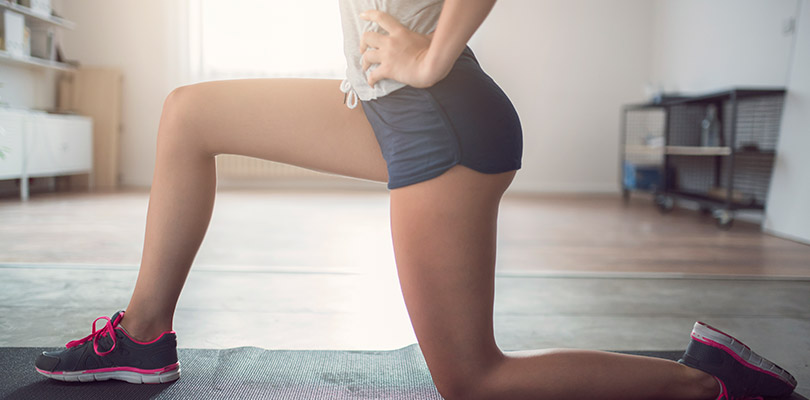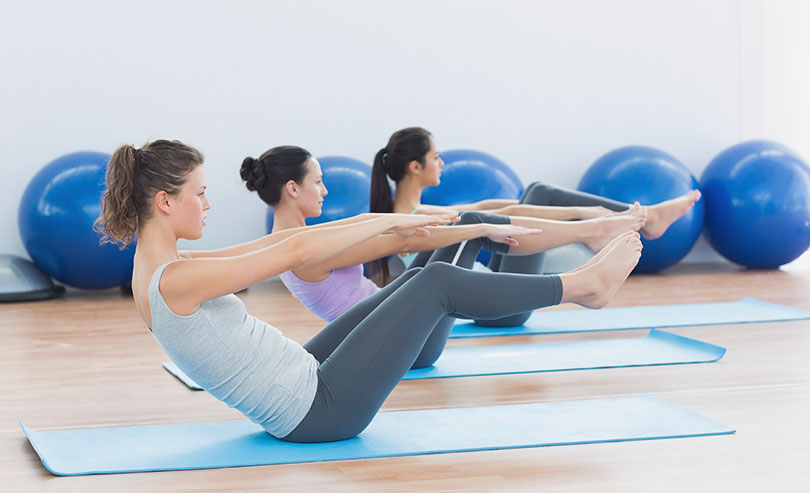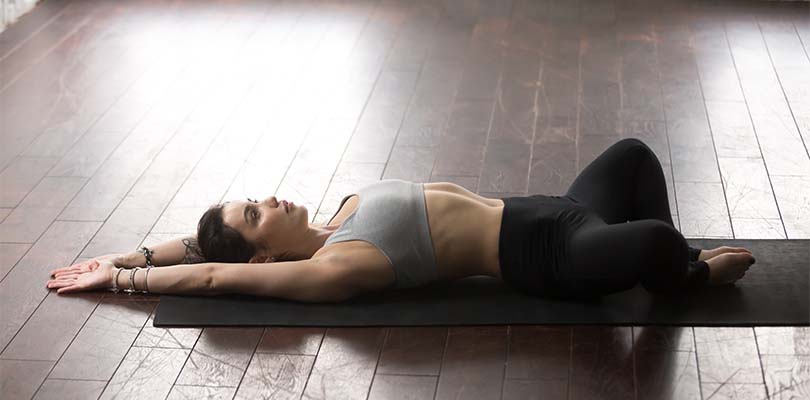Pelvic Floor Exercises for OAB
You may not think about your pelvic floor very often unless you have overactive bladder (OAB). Perhaps you had never heard of it before. Your pelvic floor does so much for you without you even knowing.
The pelvic floor stretches across the bottom of your pelvis. It keeps things up as well as allows things out. But sometimes it doesn’t cooperate properly, and we are left with some unpleasant side effects.
Fortunately, there are things we can do without the cost of fancy equipment or a specialist. If you require a specialist, there are pelvic floor physiotherapists available to help you regain strength. This is a process that requires your dedication and hard work to reach a goal of a strong and healthy bladder.
What Is the Pelvic Floor?
In men, the pelvic floor supports the bladder and bowels. While in women, it supports the bladder, bowels, as well as the uterus. In both genders, the pelvic floor allows a passageway for urine and feces to exit when sitting on a toilet.
When the pelvic floor is weakened, these movements can become involuntary as the muscles can no longer hold closed the passageway when not sitting on a toilet, especially under any amount of physical stress.
Pelvic Floor Exercise Benefits in Men and Women
The benefits of having a strong, healthy bladder are important in people with or without OAB in both genders for bladder and bowel control. For men, it decreases the risk of prolapse which can feel like a bulge in the rectum, improve recovery after prostate surgery, and improve sex.
For women, it can reduce the risk of prolapse which as well can be felt as a bulge or discomfort in the vagina, improve recovery after childbirth as well as gynecological surgery, as well as increase sexual sensation.
Both men and women will feel an increase in confidence in social scenarios and a better quality of life. For instance, actively trying to retrain your bladder benefits you by improving bladder and bowel control.
Having OAB makes this extra challenging because although there are many reasons to do pelvic floor exercises, OAB can come at any stage in life without any warning or reason, while most of these events listed above do have a reason and have more methods of treatment.
What Happens to Your PV Muscles If You Don’t Strengthen it?
If you think about your bladder as a balloon that’s continuously filling and emptying, and your pelvic floor is the tie that keeps the balloon open or closed when it needs to void, then it sounds like it’s already working out and exercising all the time flawlessly.
When you throw into the equation any movement, whether getting out of bed, walking or running around, bending down to pick up something, or even jumping, you’re putting stress on that tie that holds the balloon closed. The tie may slip, and some air might leak out of the balloon. The balloon might not instinctively be the problem, rather just the source of where the problem ends up being.
As we get older, we are constantly putting more stress on our pelvic floor muscles. This is a natural part of aging. Not everyone with age will suffer pelvic floor distress.
However, if we don’t exercise these muscles, we can be subject to leaking when coughing, laughing, jumping, going from sitting to standing, and other motions. OAB urge incontinence will, in turn, be affected by these motions as well. You may lose as much as a small amount of urine to a gush of urine in one movement or a cough.
A strong and healthy pelvic floor will easily contract and hold the muscles tight, therefore closing your urethra and anus passageways. Then it will release when ready to use the washroom. We want to be able to have control over this function. It is not a pleasant thing to have to deal with when it doesn’t work properly.
Finding Your Pelvic Floor
Firstly, we need to identify what are your pelvic floor muscles. To do that, start by imaging stopping a stream of urine. Those are your pelvic floor muscles.
This is not an exercise however and is not recommended to do repetitively while urinating. You should be able to feel a ‘life and squeeze’ motion; otherwise, you are not doing it correctly.
A correct contraction should not cause any hindrance in breathing; pulling in your belly button towards your backbone causes you to hold your breath or take shallow breaths, and this can cause a bearing-down effect on your pelvic floor. An incorrect method will clearly have the opposite effect as opposed to lifting your muscles. Once located, you can proceed to practice these exercises.
Five Pelvic Floor Exercises and How to Do Them
Adding the right medication for OAB to your healthy lifestyle and physical therapy can make a huge difference in your confidence and happiness.
1. Posture
Having good posture isn’t all about appearances. A simple motion as tucking in your chin closer to your neck will alleviate a ton of head, neck, shoulder, spine, and back pains and issues. We need to have good posture from our head to our feet to benefit from it entirely.
To check your posture, have someone take a picture of you from the side, or you can hang a string with a pencil tied to the end from your ear. You want your ears to be on a straight line down to your ankles.
As well, we need to stand with our feet shoulder width apart. If you have a standing job, this is going to be the place where you’re going to get the most benefit and exercise from this.
Practice standing with your feet apart and with your head and ears aligned with your ankles. It will take some reminding to yourself at first, but it will strengthen your pelvic floor, and this is considered beginner exercise.
2. Breathing
Take time to notice your breaths and how your stomach or chest rises and falls. Start off by lying down on your back. While on your back, put your hand on your stomach and relax.
Take a deep breath in and watch your hand. Does it rise or stay put?
If your hand does not rise, that means you are breathing through your chest and have adapted a shallow breathing pattern. This action means you are holding in your gut and causing stress to your stomach muscles, which then means you are always clenching down below.
Start off with this simple exercise.
- Sit on a stool, or preferably an exercise ball,
- Take deep breaths in and out, allowing your belly to relax outward.
This exercise might not feel successful at first, but with each breath out you are expanding your ribcage and allowing for your diaphragm to function properly.
Your diaphragm fills with air, and your rib cage expands to make room, and your pelvic floor relaxes a little to allow for the downward pressure from your lungs.
- As you exhale, your lungs shrink up again, and your pelvic floor contracts. This, along with most exercise, will take practice and soon you will be able to feel the effects of the pressure on the pelvic floor.
We need to feel that because then we know it is working and thus naturally strengthening our pelvic floor. It needs to relax and contract for it to be healthy and strong.
3. Diaphragm And Core Weight-lifting
Another breathing exercise we can do is with a balloon.
- Lie on your side and bring your knees forward so your back curves into a C shape. Tuck in your chin to avoid neck and back strain.
- Start blowing up a balloon by breathing in through your nose and out your mouth. You are creating pressure by only engaging your core and your diaphragm.
The balloon acts as a restraint as you add more air into it. Do this and repeat every time the balloon gets full or until you can’t fill it anymore.
4. Advanced Diaphragm and Core Weight-lifting
- Start on your hands and knees, and then push your feet under you, so you look like you’re about to do push-ups.
- Keeping your arms extended and the balloon in your mouth, blow up the balloon while bringing in one knee to your midsection and back.
- Repeat with your other leg until you’ve done ten reps.
5. Siting Squats
For our pelvic floor, we want to practice “sitting” squats.
- Grab onto a dresser or door handle, something sturdy that can hold your weight.
- Standing with your feet shoulder-width apart, start to descend allowing your rear to extend out and without curving your back. (Imagine you’re about to sit on a chair.)
- Use that door handle or the top of the dresser to help bring yourself back up without curving your back.
- On your way down again, breath in while you squat. (This is allowing your pelvic floor to expand along with your ribcage and diaphragm.)
- On your way up, exhale, and this is telling your pelvic floor to contract and pull itself back up again.
By doing any of these exercises you are teaching your pelvic floor how to behave when you do certain movements, you are retraining your brain to have better posture, and you are learning what a relaxed or contracted pelvic floor feels like.
You should be able to recognize incorrect posture, and correct your stance or your breathing and react quickly when you are feeling yourself going back to your old state.
The Takeaway
Creating a habit is just as difficult as ending one. Making these exercises a part of one’s routine is not expected to happen overnight. Although very minimal sounding, they can be difficult to do, as well as difficult to remember.
They certainly aren’t as overwhelming as an actual workout, but they provide such a benefit to those struggling with urge incontinence and OAB. Start planning it alongside something as habitual as brushing your teeth or brushing your hair. Maybe even include them in your showering time. Diligence is key.
Find a place for pelvic floor exercises in your routine, and once you’re more comfortable, you can increase the number of times a day you do them. It is never too late to start exercising your pelvic floor.







